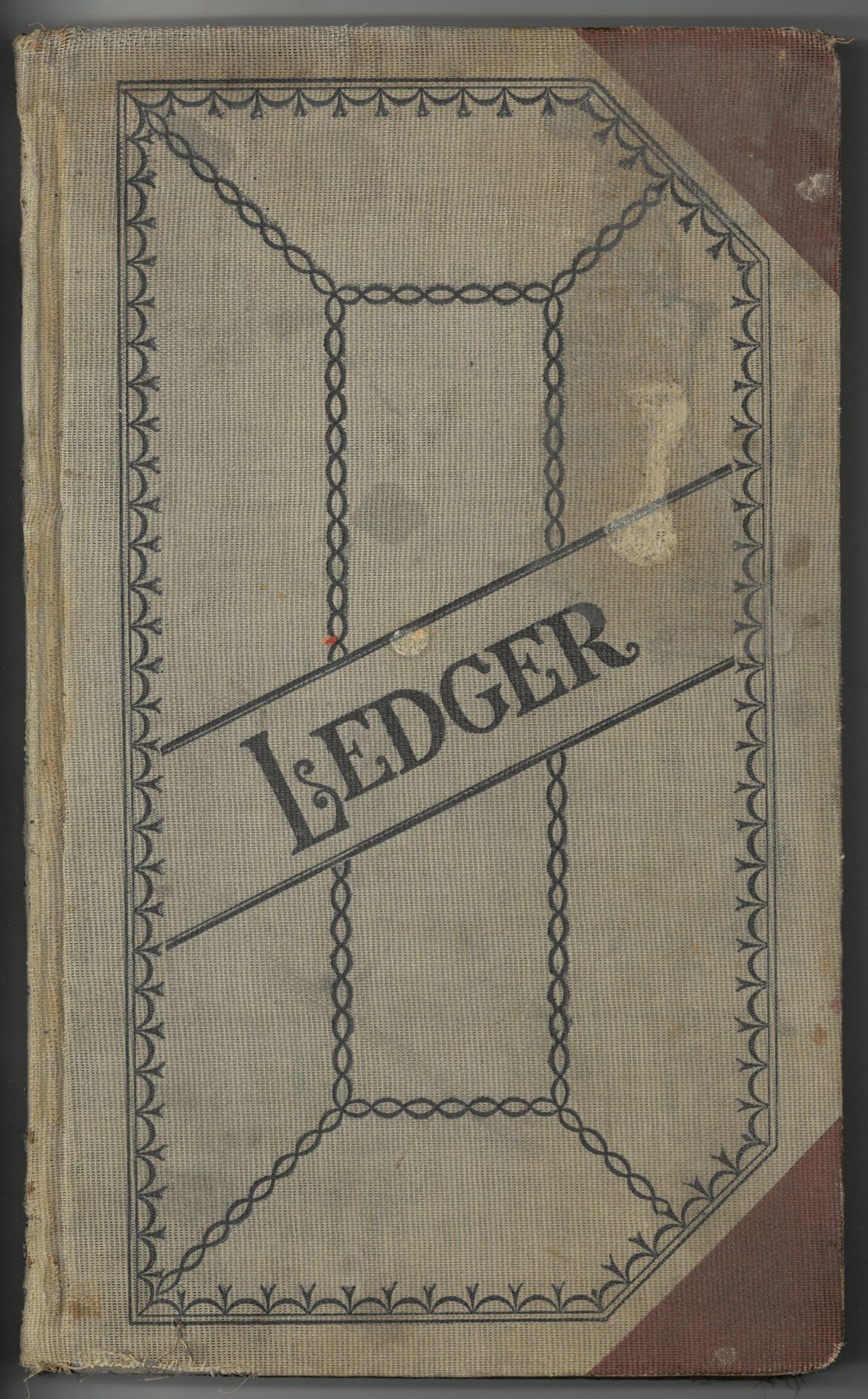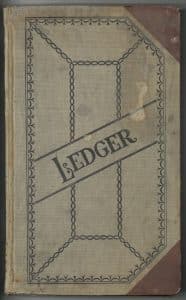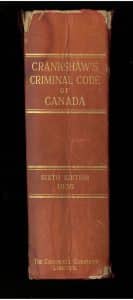By Brenda McCafferty, LASA Archivist
LASA is grateful to Merry Rogers (Law Society of Alberta employee) for her recent donation of an interesting court ledger acquired last month.
At first look, the ledger appeared unexceptional but upon further examination it revealed a record of legal proceedings that transpired in Carstairs, Alberta between 1916 and 1920. The source and provenance of the ledger was unknown (a friend of Merry from Carstairs found the ledger amongst her late grandfather’s belongings).
Upon further inspection, it appeared the ledger doubled as a notebook and included a handwritten record of proceedings presumably made by the Clerk of the Court for Police Magistrate / Associate Justice of the Peace hearings held in Carstairs. During the Great War Carstairs was, and remains today, within the jurisdiction of the judicial district of Calgary.[i]
Three Justices of the Peace who serviced the communities of Crossfield and Carstairs are mentioned: E.H. Morrow, Mr. Hartmann, and S. Willis. Police Magistrates at the time were not required to be lawyers, as was the case with these three men. The volume contains handwritten notes of cases heard, sentences imposed, costs incurred, and fines paid relating to a variety of Criminal Code of Canada matters which included violations for:
- Vagrancy
- Adulteration Act (the mixing of matter of inferior or harmful quality causing impurity that is unfit for human consumption)
- Assault
- Children’s Protection Act
- Truancy Act
- Master & Servants Act (regarding the payment of wages)
- Theft
- Indecent exposure
- Disorderly conduct
- Estray animals
In addition to hearing notes, the ledger also includes entries recording court expenses. Many of the cases described in the ledger relate to the charge of “vagrancy” (C.C.C. Chapter 146, Section 238).[ii] The punishment for Defendants found guilty of vagrancy consisted of imprisonment and six months hard labour served at the Fort Saskatchewan or Lethbridge Gaol (prison). At this time in Alberta history, Police Magistrates were authorized to adjudicate many kinds of cases in rural communities.[iii]
Interestingly, the date range of the ledger corresponds to the First World War and the military conscription era, with several Defendants charged with vagrancy (having “no fixed abode”) and who possessed surnames suggestive of Germanic descent. Mennonites, who were pacifists, comprised a sizable percentage of the homesteading/farming community who settled in and around Carstairs. The War Measure Act, in affect between August 4, 1914, and January 10, 1920, was used during this period to suspend civil liberties of people in Canada who were not property owners and considered “enemy aliens”. Many investigations noted in the ledger were conducted by Corporal Birch of the RNWMP, and Alberta Provincial Police Constables Batts and Joseph Clarkson. Notably, two cases involved young men who failed to enlist in the war effort following conscription and questioned their naturalization status.
The second half of the ledger purportedly dates from a later period and consists of accounting entries and orders for Giant Coal Co. and Westmount Lions Club, ca. 1923. Finally, one page of the ledger contains entries related to the Post Office Benevolent & Co-operative Association that was established to provide charitable aid.
ENDNOTES
[i] Other Carstairs Magistrate court records and Calgary judicial district records are available at the Provincial Archives of Alberta (PAA). Links to the description of related records at the PAA:
(1905-1978)
Administrative history
Initially continuing the Northwest Territories Ordinance regarding the role of magistrates, Alberta passed An Act respecting Police Magistrates and Justices of the Peace (SA 1906, c. 13). Also known as police courts, magistrate’s courts acted as the initial point of entry into the province’s judicial system, with actions often moving on to the District Court of Alberta or the Supreme Court of Alberta for trial. In 1918, magistrates were given the authority to hear small debts cases. In 1955, the designation “police magistrate” was shortened to “magistrate” (RSA 1955, c. 186).
Link:
See: https://searchprovincialarchives.alberta.ca/magistrates-court-calgary-fonds
Judicial District of Calgary
(1885-1970)
Administrative history:
- The Judicial District of Calgary was established on October 1, 1906 by Order-in-Council (O.C.) 516/06.
- The Judicial District of Calgary is a geographic area in central Alberta that facilitated the adjudication of cases through the province’s court system.
- Cities, towns, and villages within this judicial district have included Acme, Airdrie, Banff, Bassano, Calgary, Canmore, Carstairs, Cochrane, Crossfield, Didsbury, Drumheller, Gleichen, Hanna, High River, Langdon, Okotoks, Olds, Strathmore, Trochu, Three Hills, Vulcan, and Youngstown.
See: https://searchprovincialarchives.alberta.ca/judicial-district-of-calgary
[ii] Criminal Code of Canada – Chapter 146, section 238, C.C.C. (Vagrancy)
From: Crankshaw’s Criminal Code of Canada (1924), from the J.W. McClung library at LASA.
S:\CCC, Chapter 146, Section 238 – Vagrancy.pdf
[iii] Police Magistrate job description, from the Provincial Archives of Alberta (see link below)
An Act Respecting Police Magistrates and Justices of the Peace, Statutes of Alberta, 1906, c. 13 https://provincialarchives.alberta.ca/static/history/magistrates-courts.html





